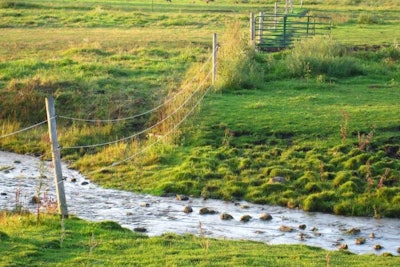
The U.S. Department of Agriculture (USDA) will assist organic farmers with the cost of establishing up to 20,000 acres of new conservation buffers and other practices on and near farms that produce organic crops. USDA Farm Service Agency (FSA) deputy administrator for farm programs, Brad Pfaff, announced the financial assistance February 26, 2016, at the Midwest Organics and Sustainable Education Service (MOSES) Organic Farming Conference in La Crosse, Wisconsin.
On the same day, Agriculture Secretary Tom Vilsack also announced an investment of $25 million targeted to help agriculture producers improve water quality in high-priority streams and rivers across the country.
"This financial assistance will help tailor existing conservation practices to the needs of organic farmers, helping to improve soil and water quality while also providing more wildlife habitat," said Pfaff. "This is one part of the wide variety of services available to all segments of agriculture at local FSA offices, in addition to credit, risk protection, on-farm storage and other services."
The financial assistance is available from the USDA Conservation Reserve Program (CRP), a federally-funded voluntary program that contracts with agricultural producers so that environmentally sensitive land is not farmed or ranched but instead used for conservation benefits. CRP participants establish long-term, resource-conserving plant species, such as approved grasses or trees to control soil erosion, improve water quality and develop wildlife habitat. In return, FSA provides participants with rental payments and cost-share assistance. Contract duration is between 10 and 15 years.
For conservation buffers, funds are available for establishing shrubs and trees, or supporting pollinating species, and can be planted in blocks or strips. Interested organic producers can offer eligible land for enrollment in this initiative at any time.
Consumer demand for organic food and growth in U.S. organic sales has averaged 10 percent annually over the last five years, according to National Sustainable Agriculture Coalition (NSAC) and National Organic Coalition (NOC) data, offering market incentives for U.S. farmers.

















